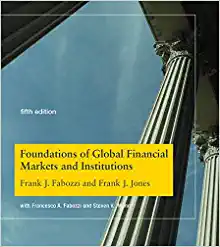Question
1) There are three reasons why people demand money: for use in transactions, for precautionary reasons (meaning in case of emergencies), and for speculative safety
1) There are three reasons why people demand money: for use in transactions, for precautionary reasons (meaning in case of emergencies), and for speculative safety (meaning in case some investments drop in value). Give an example of a time when you demanded money for each of these reasons. Describe the specific circumstances of your demand for money.
2) Recall that an exchange rate is the price of one currency in another. For example, it may take US $1.35 to buy 1 British Pound.Also,recall the interest rates affect exchange rates. What do you predict will happen to the foreign exchange rate if interest rates in the United States increased more than in the UK? (In other words, which currency will become stronger?) How would such a change affect US exports to the UK? Would it be less expensive for an American tourist to take a vacation to London after the interest rate change? Be sure to clearly explain and justify your reasoning.
3)The statutes of the recently established European Central Bank (ECB) state that its primary objective is to maintain price stability. How does this charter differ from that of the Fed? What significance does it have for monetary policy?
4)Suppose we observed an economy in which changes in the money supply produce no changes whatever in nominal GDP. What could we conclude about velocity?
5. Suppose price levels were falling 10% per day. How would this affect the demand for money? How would it affect velocity? What can you conclude about the role of velocity during periods of rapid price change?
6. Suppose investment increases and the money supply does not change. Use the model of aggregate demand and aggregate supply to predict the impact of such an increase on nominal GDP. Now what happens in terms of the variables in the equation of exchange?
7) The text notes that a 10% increase in the money supply may not increase the price level by 10% in the short run. Explain why.
8. Trace the impact of an expansionary monetary policy on bond prices, interest rates, investment, the exchange rate, net exports, real GDP, and the price level. Illustrate your analysis graphically.
9. Trace the impact of a contractionary monetary policy on bond prices, interest rates, investment, the exchange rate, net exports, real GDP, and the price level. Illustrate your analysis graphically.
Step by Step Solution
There are 3 Steps involved in it
Step: 1

Get Instant Access to Expert-Tailored Solutions
See step-by-step solutions with expert insights and AI powered tools for academic success
Step: 2

Step: 3

Ace Your Homework with AI
Get the answers you need in no time with our AI-driven, step-by-step assistance
Get Started


